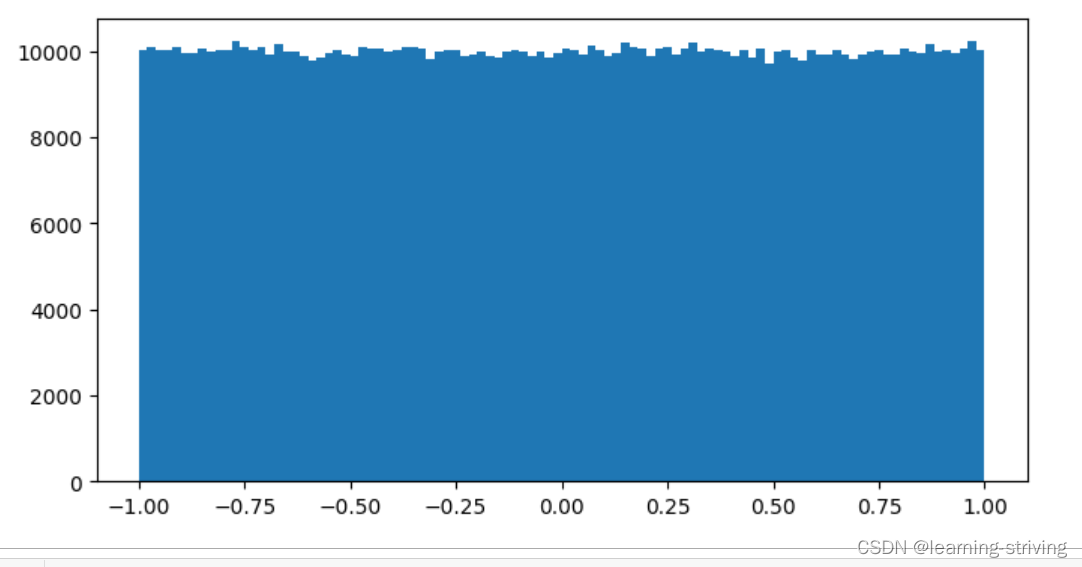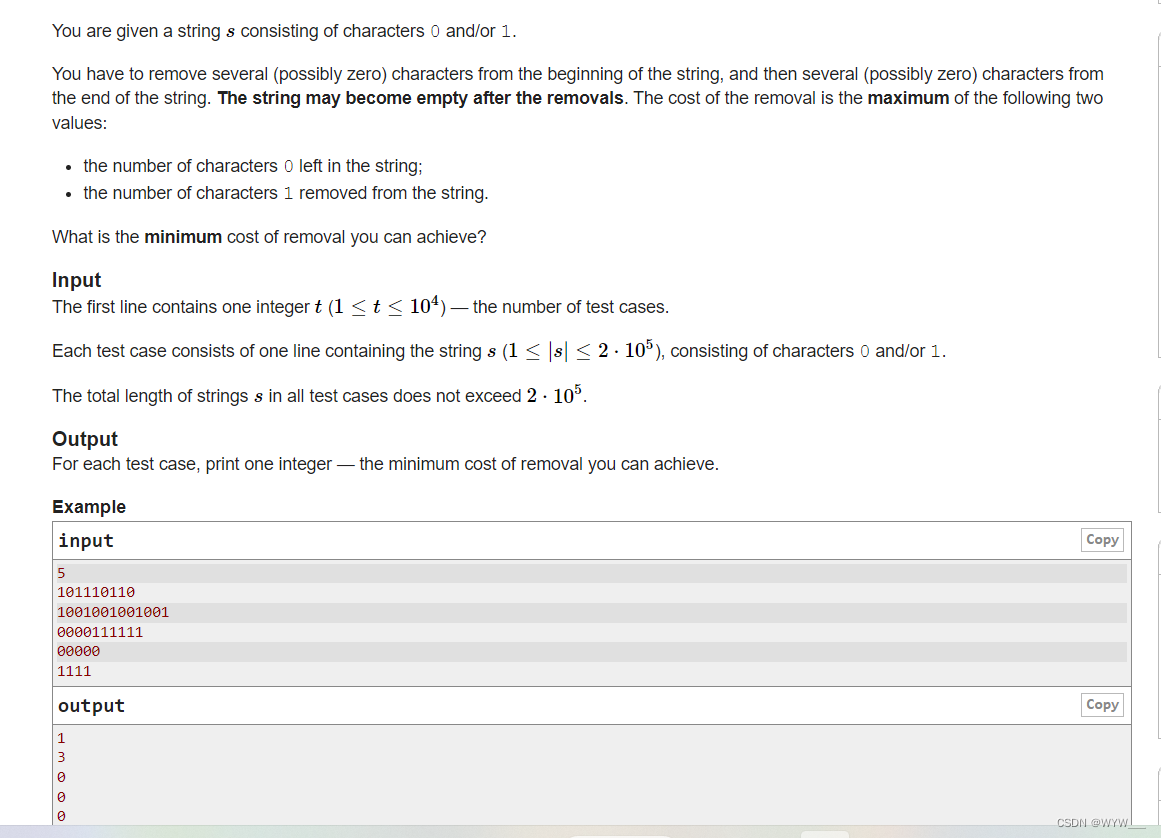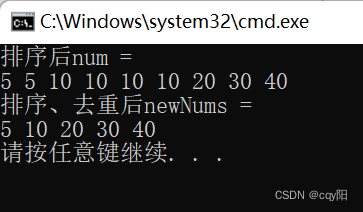HTTP服务器
1. 项目背景和技术特点
实现目的
从移动端到浏览器,HTTP 协议无疑是打开互联网应用窗口的重要协议,其在网络应用层中的地位不可撼动,是能准确区分前后台的重要协议。
完善对HTTP协议的理论学习,从零开始完成WEB服务器开发。
采用 CS 模型,编写支持中小型应用的HTTP服务器,井结合MySQL。
该项目可以帮助我们从技术上理解上网输入网站URL到关闭浏览器到所有操作中的技术细节。
HTTP基础知识,这里就不再赘述了
技术特点
- Linux 网络编程 TCP/IP协议、socket流式套接、http协议。
- 多线程技术
- cgi 技术
- shell 脚本
- 线程池
开发环境
- centos7
- vim gcc/g++ Makefile
2. 代码结构和实现思路
TcpServer
先实现HTTP的底层协议TCP的代码,也就是完成基本的网络套接字代码。实现成单例模式以供上层调用。
//TcpServer.hpp
#pragma once
#include <iostream>
#include <string>
#include <cstdlib>
#include <cstring>
#include <sys/types.h>
#include <sys/socket.h>
#include <netinet/in.h>
#include <arpa/inet.h>
#include <pthread.h>
#include <fcntl.h>
#define BACK_LOG 5
class TcpServer
{
private:
int _port;
int _listen_sock;
TcpServer(int port) : _port(port), _listen_sock(-1)
{}
TcpServer(const TcpServer& ts) = delete;
TcpServer operator=(const TcpServer& ts) = delete;
static TcpServer* _svr;
public:
static TcpServer* GetInstance(int port);
void InitServer();
void Socket();
void Bind();
void Listen();
~TcpServer()
{}
};
TcpServer* TcpServer::_svr = nullptr;
HttpServer
HttpServer类实现调用TcpServer单例,并进入事件循环。
#pragma once
#include <iostream>
#include <pthread.h>
#include "TcpServer.hpp"
#include "Protocol.hpp"
#define PORT 8080
class HttpServer
{
private:
int _port;
TcpServer* _tcp_svr;
bool _stop;
public:
HttpServer(int port = PORT) : _port(port), _tcp_svr(nullptr), _stop(false)
{}
void InitServer() {
_tcp_svr = TcpServer::GetInstance(_port);
}
void Loop();
~HttpServer()
{}
};
接下来就是,读取请求,分析请求,构建响应并返回。
Protocol
定制HTTP请求和响应的协议。接着就是EndPoint类实现HTTP读取解析响应等一系列函数。
struct HttpRequest
{
std::string _request_line;
std::vector<std::string> _request_headers;
std::string _blank;
std::string _request_body;
std::string _method;
std::string _uri;
std::string _version;
std::string _path;
std::string _query;
struct stat _resoucre_stat;
bool _cgi = false;
std::unordered_map<std::string, std::string> _header_kvs;
};
struct HttpResponse
{
std::string _status_line;
std::vector<std::string> _response_headers;
std::string _blank = LINE_BREAK;
std::string response_body;
int _status_code = OK;
int _resource_fd = -1;
};
class EndPoint
{
private:
int _sock;
HttpRequest _http_request;
HttpResponse _http_response;
private:
void RecvHttpRequestLine();
void RecvHttpRequestHeadler();
void ParseHttpRequestLine();
void ParseHttpRequestHeadler();
void RecvParseHttpRequestBody();
int ProcessCgi();
int ProcessWebPage();
public:
EndPoint(int sock) : _sock(sock) {}
void RecvHttpRequest()
{
RecvHttpRequestLine();
RecvHttpRequestHeadler();
}
void ParseHttpRequest()
{
ParseHttpRequestLine();
ParseHttpRequestHeadler();
RecvParseHttpRequestBody();
}
void BuildHttpResponse();
void SendHttpResponse();
~EndPoint()
{}
};
读取和解析请求
当前请求时,我们以行为单位。
从各大平台发来的数据的行分隔符各有不同,我们要做的是兼容所有情况,也就是我们要自行实现读取一行数据的接口。
void EndPoint::RecvHttpRequestLine()
{
std::string& line = _http_request._request_line;
Util::ReadLine(_sock, &line);
line.resize(line.size() - 1);
}
void EndPoint::RecvHttpRequestHeadler()
{
std::string line;
while (true) // 读到空行,读取结束
{
Util::ReadLine(_sock, &line);
if (line == "\n") {
_http_request._blank = line; // 将空行放到blank中
break;
}
line.resize(line.size() - 1);
_http_request._request_headers.push_back(std::move(line));
line.clear();
}
}
void EndPoint::ParseHttpRequestLine()
{
std::stringstream ss(_http_request._request_line);
ss >> _http_request._method >> _http_request._uri >> _http_request._version;
}
void EndPoint::ParseHttpRequestHeadler()
{
for (auto& header : _http_request._request_headers)
_http_request._header_kvs.insert(Util::GetKV(header, ": "));
}
void EndPoint::RecvParseHttpRequestBody()
{
auto& method = _http_request._method;
auto& headers_map = _http_request._header_kvs;
auto& body = _http_request._request_body;
auto iter = headers_map.find("Content-Length");
if (iter == headers_map.end())
return;
else
_http_request._content_length = stoi(iter->second);
Util::ReadLine(_sock, &body);
body.resize(body.size() - 1);
}
构建和返回响应
如果是GET方法获取资源路径,并进行一系列的检查判断。根据请求资源的类型设置CGI处理,如果是POST方法直接设置CGI。
void EndPoint::BuildHttpResponse()
{
auto& code = _http_response._status_code;
auto& path = _http_request._path;
auto& rsrc_st = _http_request._resoucre_stat;
// 排除非法请求
if (_http_request._method != "GET" && _http_request._method != "POST") {
LOG(WARNING) << "bad request invaild method\n";
code = BAD_REQUEST;
goto END;
}
if (_http_request._method == "GET") {
size_t pos = _http_request._uri.find('?');
if (pos != std::string::npos) {
Util::CutString(_http_request._uri, &path, &_http_request._query, pos);
_http_request._cgi = true; // 带参一定用cgi
}
else
path = _http_request._uri;
// 检查资源路径
path = WEB_ROOT + path; // 拼接web根目录前缀
if (path.back() == '/')
path += HOME_PAGE; // 拼接默认访问资源后缀
//判断资源路径是否合法
if (stat(path.c_str(), &rsrc_st) == 0) {
if (S_ISDIR(rsrc_st.st_mode)) {
path += "/" + HOME_PAGE;
stat(path.c_str(), &rsrc_st);
}
if (rsrc_st.st_mode & S_IXUSR ||
rsrc_st.st_mode & S_IXGRP ||
rsrc_st.st_mode & S_IXOTH)
_http_request._cgi = true;
}
else {
LOG(WARNING) << "require " << path + " resource not found\n";
code = NOT_FOUND;
goto END;
}
}
else if (_http_request._method == "POST") {
_http_request._cgi = true;
path = WEB_ROOT + _http_request._uri;
}
else {}
// 处理请求
if (_http_request._cgi == true) {
code = ProcessCgi(); // 执行cgi请求,程序运行结果放到response_body中
if (code == OK)
LOG(INFO) << "cgi process executed success\n";
code = ProcessWebPage(); // 讲cgi结果构建网页返回
}
else {
code = ProcessWebPage(); // 返回静态网页
if (code == OK)
LOG(INFO) << "send " + path + " success\n";
}
}
发送响应就是简单的将构建好的响应返回给对端即可。
void EndPoint::SendHttpResponse()
{
send(_sock, _http_response._status_line.c_str(), _http_response._status_line.size(), 0);
for (auto& header : _http_response._response_headers) {
header += LINE_BREAK;
send(_sock, header.c_str(), header.size(), 0);
}
send(_sock, _http_response._blank.c_str(), _http_response._blank.size(), 0);
if (_http_request._cgi) {
auto& body = _http_response.response_body;
int total = 0;
while (total < body.size()) {
ssize_t s = send(_sock, body.c_str() + total, body.size() - total, 0);
if (s == 0) break;
total += s;
}
}
else {
sendfile(_sock, _http_response._resource_fd, 0, _http_request._resrc_stat.st_size);
close(_http_response._resource_fd);
}
LOG(INFO) << "send http response success\n";
}
处理静态和非静态请求
构建普通网页响应。
int ProcessNonCgi()
{
_http_response._resource_fd = open(_http_request._path.c_str(), O_RDONLY);
if (_http_response._resource_fd < 0)
return NOT_FOUND;
auto& line = _http_response._status_line;
auto& code = _http_response._status_code;
line = HTTP_VERSION + " " + std::to_string(code) + " " + Util::Code2Desc(code) + LINE_BREAK;
auto& stat = _http_request._resoucre_stat;
auto& path = _http_request._path;
std::string content_type_header = "Content-Type: " + Util::Suffix2Type(GetSuffix(path));
std::string content_length_header = "Content-Length: " + std::to_string(stat.st_size);
std::string content_language_header = "Content-Language: zh-cn";
_http_response._response_headers.push_back(content_type_header);
_http_response._response_headers.push_back(content_length_header);
_http_response._response_headers.push_back(content_language_header);
return OK;
}
构建CGI响应。这是本项目的重难点。
线程首先首先创建子进程,将具体执行进程程序替换的任务交给子进程。
其次定制父子进程通信协议。
请求方法,GET方法的请求参数,报头中的正文大小几个变量都用环境变量导给子进程。POST方法的请求体使用管道导给子进程。
中个细节代码中有注释说明。
int ProcessCgi()
{
auto& method = _http_request._method;
auto& body = _http_request._request_body;
auto& path = _http_request._path;
auto& code = _http_response._status_code;
// 构建两个管道,一个是父写子读,一个是父读子写,管道从父进程角度命名
// parent output[1] --> output[0] child
// parent input[0] <-- input[1] child
int input[2]; // 父读子写
int output[2]; // 父写子读
if (pipe(input) < 0 || pipe(output) < 0)
return SVR_ERROR;
pid_t pid = fork();
if (pid == 0) /* child */ {
close(input[0]);
close(output[1]);
int ret = setenv("METHOD", method.c_str(), 1); // 先导请求方法
if (method == "GET") // 再导GET请求参数
ret |= setenv("QUERY", _http_request._query.c_str(), 0);
else if (method == "POST") // 再导正文大小
ret |= setenv("CONTENT_LENGTH", std::to_string(body.size()).c_str(), 0);
if (ret < 0)
LOG(WARNING) << "set env failed, errno: " << errno << '\n';
dup2(input[1], 1);
dup2(output[0], 0);
execl(_http_request._path.c_str(), _http_request._path.c_str(), nullptr);
code = SVR_ERROR;
exit(1);
}
else if (pid > 0) /* parent */ {
close(input[1]);
close(output[0]);
if (_http_request._method == "POST") {
auto& body = _http_request._request_body;
int already = 0;
while (already < body.size()) {
ssize_t s = write(output[1], body.c_str() + already, body.size() - already);
if (s == 0) break;
already += s;
}
}
int status = 0;
pid_t ret = waitpid(pid, &status, 0);
if (ret < 0)
LOG(ERROR) << "parent process wait failed\n";
code = SVR_ERROR;
}
close(input[0]);
close(output[1]);
return code;
}
else { /* pid < 0 */
LOG(ERROR) << "failed to create child process\n";
return SVR_ERROR;
}
return code;
}
差错处理
在读取请求构建响应发送响应的过程中,都穿插着错误判断,并以HTTP响应状态码作为返回值。
在适当的地方goto END;,直接进行错误处理。错误处理利用得到的状态码构建错误响应,也就是返回错误网页,如404页面。
void BuildHttpResponse()
{
// 排除非法请求
if (_http_request._method != "GET" && _http_request._method != "POST")
{
LOG(WARNING) << "bad request invaild method\n";
code = BAD_REQUEST;
goto END;
}
//...
// 差错处理
END:
if (code != OK)
{
LOG(INFO) << "headler error begin, code: " << code << '\n';
ErrorHelper(); // 构建错误响应
}
}
private:
void ErrorHelper()
{
_http_request._cgi = false; // 错误处理,返回静态网页
auto& code = _http_response._status_code;
switch (code)
{
case BAD_REQUEST:
HeadlerWrong(PAGE_404);
break;
case NOT_FOUND:
HeadlerWrong(PAGE_404); // 单独构建404页面
break;
case SVR_ERROR:
HeadlerWrong(PAGE_404);
break;
case SVR_UNAVL:
HeadlerWrong(PAGE_404);
break;
default:
LOG(WARNING) << "unkown error code" << std::endl;
break;
}
}
void HeadlerWrong(const std::string& wrong_page)
{
_http_request._path = WEB_ROOT + '/' + wrong_page;
stat(_http_request._path.c_str(), &_http_request._resoucre_stat);
ProcessWebPage(); // 返回404页面
}
int ProcessCgi()
{
if (pid == 0) {
//...
}
else if (pid > 0) { /* parent */
// 获取子进程退出结果
int status = 0;
pid_t ret = waitpid(pid, &status, 0);
if (ret == pid)
{
// 管道读取子进程输出
char ch = 0;
while (read(input[0], &ch, 1))
_http_response.response_body.push_back(ch); // 子进程输出放到响应体中
//判断进程是否正常终止
if (WIFEXITED(status)) {
LOG(INFO) << "subprocess exited exit code: " << WEXITSTATUS(status) << '\n';
if (WEXITSTATUS(status) != 0)
code = BAD_REQUEST;
} else {
LOG(INFO) << "subprocess exited by signal: " << WIFEXITED(status) << '\n';
code = BAD_REQUEST;
}
}
else {
LOG(ERROR) << "parent process wait failed\n";
code = SVR_ERROR;
}
//...
return code;
}
else /* pid < 0 */ {
LOG(ERROR) << "failed to create child process\n";
return SVR_ERROR;
}
return code;
}
引入线程池
任务队列中的任务类,设置回调方法,使任务体能够自行调用处理任务的函数。
class Task
{
private:
int _sock;
CallBack HandlerTask; // 设置回调 当队列中有任务时,调用回调让后端处理任务
public:
Task() {}
Task(int sock) : _sock(sock) {}
~Task() {}
void ProcessTask() {
HandlerTask(_sock);
}
};
将HeaderRequest方法,构建成回调CallBack仿函数。
class CallBack
{
public:
CallBack() {}
~CallBack() {}
public:
void operator()(int sock) {
EndPoint* ep = new EndPoint(sock);
if (ep->RecvHttpRequest() && ep->ParseHttpRequest()) {
ep->BuildHttpResponse();
ep->SendHttpResponse();
}
else
LOG(WARNING) << "recv http request failed\n";
delete ep;
}
};
设置线程池,并配备任务队列。
交给外部HTTPServer类向任务队列中添加accept接受到的任务。
自身设置TASK_NUM数量的线程来同步互斥地获取任务队列中的任务。
class ThreadPool
{
private:
std::queue<Task> _task_queue;
int _task_num;
bool _stop;
pthread_mutex_t _mtx;
pthread_cond_t _cond;
static ThreadPool* _thread_pool;
private:
ThreadPool() = default;
ThreadPool(int num = TASK_NUM) : _task_num(num), _stop(false) {
pthread_mutex_init(&_mtx, nullptr);
pthread_cond_init(&_cond, nullptr);
}
ThreadPool(const ThreadPool&) = delete;
public:
static ThreadPool* GetInstance() {
pthread_mutex_t lck = PTHREAD_MUTEX_INITIALIZER;
if (_thread_pool == nullptr) {
pthread_mutex_lock(&lck);
if (_thread_pool == nullptr) {
_thread_pool = new ThreadPool(TASK_NUM);
_thread_pool->InitThreadPool();
}
pthread_mutex_unlock(&lck);
}
return _thread_pool;
}
void InitThreadPool() {
for (int i = 0; i < _task_num; ++i) {
pthread_t tid;
if (pthread_create(&tid, nullptr, ThreadRoutine, (void*)_thread_pool) != 0) {
LOG(FATAL) << "create pthread failed\n";
exit(1);
}
}
LOG(INFO) << "thread pool init success\n";
}
bool isEmpty() {
return _task_queue.empty();
}
void Lock() {
pthread_mutex_lock(&_mtx);
}
void Unlock() {
pthread_mutex_unlock(&_mtx);
}
void ThreadWait() {
pthread_cond_wait(&_cond, &_mtx);
}
void ThreadWakeup() {
pthread_cond_signal(&_cond);
}
static void* ThreadRoutine(void* args) {
ThreadPool* tp = (ThreadPool*)args;
while (!tp->_stop) {
tp->Lock();
while (tp->isEmpty())
tp->ThreadWait();
Task task;
tp->PopTask(&task);
tp->Unlock();
task.ProcessTask();
}
}
void PushTask(const Task& task) {
Lock();
_task_queue.push(task);
Unlock();
ThreadWakeup();
}
void PopTask(Task* task) {
*task = _task_queue.front();
_task_queue.pop();
}
~ThreadPool() {
pthread_mutex_destroy(&_mtx);
pthread_cond_destroy(&_cond);
}
};
ThreadPool* ThreadPool::_thread_pool = nullptr;
class HttpServer
{
private:
int _port;
TcpServer* _tcp_svr;
ThreadPool* _thread_pool;
bool _stop;
public:
HttpServer(int port = PORT) : _port(port), _tcp_svr(nullptr), _stop(false) {}
~HttpServer() {}
void InitServer() {
signal(SIGPIPE, SIG_IGN); // 忽略SIGPIPE信号
_tcp_svr = TcpServer::GetInstance(_port);
_thread_pool = ThreadPool::GetInstance();
}
void Loop() {
while (!_stop) {
struct sockaddr_in peer;
socklen_t len = sizeof(peer);
int sock = accept(_tcp_svr->GetListenSock(), (struct sockaddr*)&peer, &len);
if (sock < 0) continue;
Task task(sock);
_thread_pool->PushTask(task);
}
}
};
调用逻辑

3. 难点总结和项目扩展
对于CGI机制的理解和实现。

整个HTTP服务就是CGI程序和客户端沟通的桥梁,因为CGI程序与外界的输入输出都由HTTP服务器代理和转发。
通过子进程进程程序替换的方式,能够调用任意程序,且可以获得程序的运行结果和控制其输入输出。
项目扩展
- URL encode decode
- 数据库增删查改
- HTTP其他方法
- 配置文件化
- 301302转发
业务层面
- 实现在线计算器(日期转换等)
- 实现在线简历
- 实现博客系统
技术层面
- 支持HTTP1.1长连接(链接管理)
- 提高并发量和执行效率
- 支持redis
- 支持多机器业务转发负载均衡的代理功能


![[附源码]java毕业设计壹家吃货店网站](https://img-blog.csdnimg.cn/d586f2c9518e43f09e01d5d0c96aeb10.png)
















